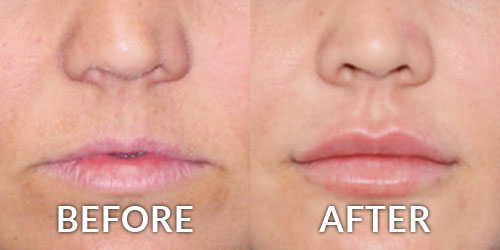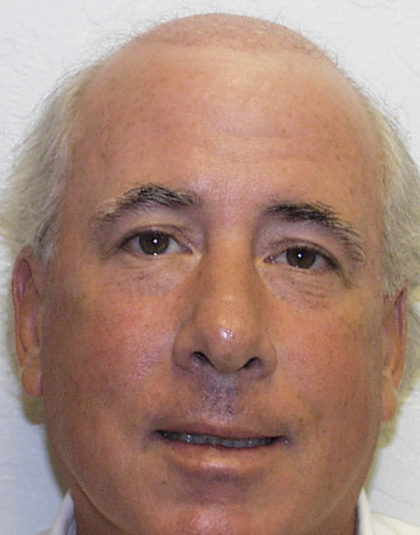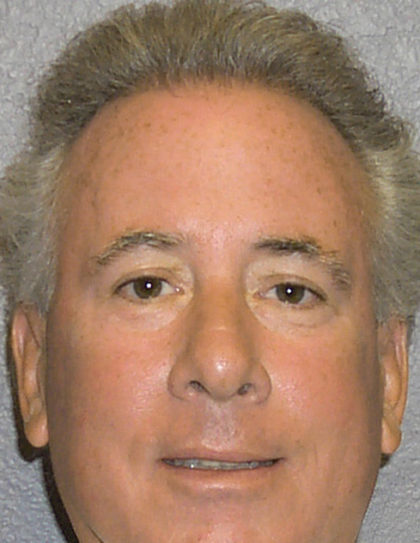FUE Hair Transplant
Consultations offered at our two convenient locations in Phoenix and Scottsdale

FUE, or follicular unit extraction, is a minimally invasive procedure designed to restore hair growth on the scalp by relocating hair follicles. FUE involves harvesting donor hair follicles from the occipital region of the scalp and implanting them into areas of hair loss. Not only are the results permanent, but they are also 100% natural since we use your very own hair. Patients gain renewed self-confidence with a procedure that not only restores thinning hair but also leaves no linear scarring.
The professionals at Phoenix Skin Medical, Surgical & Dermatology are trained in the latest, state-of-the-art hair transplant technology. We are one of the top cosmetic surgery centers in Arizona and in the country, performing thousands of successful hair transplant procedures for our patients every year. Contact us at (480) 473-9111 (Scottsdale) or (602) 222-9111 (Phoenix) to learn more, or schedule a consultation to discuss your hair restoration goals with us today.
Contents
Before and After Photos
What is Follicular Unit Extraction?
FUE is an innovative approach to hair restoration. Gone are the days when hair transplants left patients with artificial-looking results and significant scars. The process of FUE is simple. After administering a local anesthetic, a technician uses a handheld instrument called a micropunch to remove follicular units. A follicular unit is a structure that contains roughly 1 to 4 hairs.
With this amount of precision, there are no incisions or sutures required. The physician then implants the donor hairs into the treatment area where they attach to a rich blood supply. Because of this, these follicles remain alive and will continue to generate hair. Patients can enjoy fuller, thicker hair in places where they’ve lost it, and regain confidence in their appearance.
The History of Hair Transplantation
Hair transplantation was first studied in the 1930s by Dr. Shoji Okuda. In his research, he was able to successfully graft hairs onto the eyebrows, scalp, and mustache. Research continued in Japan with Dr. Hajime Tamura’s findings in the 1940s. In the United States, hair transplants were first studied by Dr. Norman Orentreich in the 50s; he coined the term “donor dominance” to describe how hair follicles retain their characteristics from where they grew previously. (1)
In the 1990s, the procedure was refined even more with the development of FUT, or follicular unit hair transplantation. This technique involves taking a thin strip of skin from the back of the head so that the follicles can be harvested and reimplanted to the treatment area. The line on the back of the head is then sutured. While the popularity of FUE has taken off, Phoenix Skin still offers FUT as an alternative.
Benefits of FUE
FUE is more than just a hair restoration procedure. Its many benefits are the reason so many people have found the procedure worth it:
- Latest advancement in hair restoration.
- Minimal scarring.
- Minimal discomfort during the recovery.
- No risk of extensive bleeding. (2)
- New hair growth lasts a lifetime.
- Local anesthesia only.
- No sutures are required.
- Most return to work in one day.
- Minimal recovery period.
Preparation
FUE is a delicate, lengthy procedure that requires some pre-operative care to yield the best results. First, we will require some blood tests to check that you are in optimal health and have no major issues that could impede the healing process.
Next, we will review your medications. We advise all patients to stop taking certain anti-inflammatories, blood thinners, and supplements that could cause excessive bleeding during the procedure. You should avoid drinking alcohol– also a blood thinner- for at least 2 weeks before your procedure date. Avoid smoking for 2 to 4 weeks beforehand since cigarettes affect your circulatory system and your body’s ability to heal properly.
In the days leading up to your procedure date, performing a scalp massage every day can promote blood flow.
What is the Fox Test?
The Fox test is a crucial part of the preparation process. During this test, we will remove approximately 200 hair follicles from the donor site. (2) The donor site is the part of your body from where the hair follicles will be harvested.
Although the back of the head is the most common donor site, physicians have been known to find viable follicles from the arms, legs, and even chest hair. The hair should be the same color, texture, and length as the hair you want on your head.
If these extractions are easy and produce complete, usable follicles, then the patient will be able to schedule their FUE appointment.
Procedure
An FUE session takes several hours to complete so that results look as natural as possible, but the procedure steps themselves are relatively simple:
- While lying comfortably in a prone position, a local anesthetic is injected into the donor area. The areas which will receive new hairs are marked for the surgeon to accurately place the hairs.
- The surgeon uses a micropunch instrument to take out individual follicular units with incisions less than a millimeter in diameter.
- With the help of small forceps, a trained assistant will gently scoop out complete follicular units.
- The follicular units are preserved in a solution.
- The physician will make microincisions on the area of the head which will receive the grafts. The harvested hair follicles are reimplanted in this area. (2)
Within 1.5 to 3 hours, approximately 1000 grafts, or about 2,000 hair follicles can be harvested. This can translate to about 4,000 individual hairs or more. Sessions are usually limited to 1500 to 2,000 grafts. In situations where more grafts are needed, the operation can be split over 2 days. (3)
Recovery
Closely following aftercare instructions for FUE will promote dense and healthy hair growth. Taking these steps will allow your hair follicles to acclimate to their new location and prevent infection:
- Do not shower for 3 days after the procedure
- Use a mild, fragrance-free shampoo for the first couple of months
- Do not do strenuous work or exercise for at least one week
- Avoid brushing your hair for 3 weeks
- Avoid wearing hats for 3 weeks
Both the donor and recipient sites will be tender and/or itchy for up to one week after the procedure. We can prescribe medication or recommend over-the-counter medications to relieve any soreness.
Candidates
The ideal candidate is a man or woman over 25 years old, has a stable, patterned form of hair loss, is a non-smoker, and has realistic expectations. They also must have all other medical conditions well managed before their procedure– this includes hypertension, heart disease, diabetes, immune deficiencies, and blood clotting disorders. (4)
Prospective patients under the age of 25 often experience hair thinning at a much faster rate, so a hair transplant may not keep up with the progression of their condition. In this case, a physician will recommend another treatment to first stabilize the rate of hair loss before considering FUE.
Not all types of hair loss can be treated with a hair transplant; for example, FUE shouldn’t be performed on someone with diffuse unpatterned alopecia (DUPA). This is because these types of alopecia can cause hair loss in all regions of the scalp, so the donor site might not have many viable hair follicles. The results may not hold up long-term due to the unpredictable nature of these disorders.
FUT and PRP
For some patients, FUT, or follicular unit transplantation is the best option. Though it requires a long strip incision, longer hair can cover the remaining scar. It is almost always a more economical option and is especially suitable for patients with looser skin who are more likely to have a less prominent scar. FUT may also be able to better cover a larger portion of baldness. After the skin of the donor site is sutured, the procedure follows FUE methods of hair follicle implantation (2)
PRP, or platelet-rich plasma, are treatments given as injections in the scalp to promote hair growth. Platelets are cells found within the blood that primarily help clot and heal wounds, but they can also stimulate the production of stem cells that create hairs.
One of our physicians can guide you through the process of deciding between PRP, FUE, and FUT- all offered at our center.
Results

You can expect to start seeing results within 12 weeks, but significant hair growth can take 6 months or more. Shedding in the first month is completely normal and is called “shock loss”. While it is unnerving for some patients, this hair loss is not permanent. The part of the hair follicle that creates the hair- the bulb- remains intact, so new hair will fill in with time.
Our highly trained medical staff at Phoenix Skin are committed to providing safe, high-quality care. Just take a glance at the reviews from our satisfied patients! We can help you decide on a hair transplantation that will give you results you will love for the rest of your life.
Personal Consultation
During a consultation, one of our physicians will go over your hair restoration goals with you and evaluate your overall health and candidacy. They can guide you through your next steps for how many FUE sessions you may need.
You can start your hair restoration journey by giving us a call at one of our two locations: (602) 222-9111 (Phoenix, Arizona) or (480) 473-9111 (Scottsdale, Arizona). Consultation appointments can also be scheduled online.
Cost of Hair Transplant in Arizona
FUE is a very individualized procedure, and everyone has a different vision for their hair restoration. The price always depends on the number of grafts used; Phoenix Skin offers patients financing options.
FAQ
Is FUE for men and women?
FUE is effective for both men and women and can treat different types of patterned hair loss.
How many sessions of FUE will I need?
The number of sessions you will need will depend on the extent of your hair loss. Any treatment that requires more than 2,000 grafts will be split into two or more sessions.
Is FUE more expensive than FUT?
FUE is more expensive than FUT, but it allows for more precision and leaves no visible scarring.
References
- Pak, J. P., Gazoni, P., Zeballos, A., & Rassman, W. (2008). The History of Hair Transplantation. The American Journal of Cosmetic Surgery, 25(4), 231–236. doi:10.1177/074880680802500408
- Dua A, Dua K. Follicular unit extraction hair transplant. Journal of cutaneous and aesthetic surgery. 2010;3(2):76-81. doi:https://doi.org/10.4103/0974-2077.69015
- Jiménez-Acosta F, Ponce-Rodríguez I. Follicular Unit Extraction for Hair Transplantation: An Update. Actas Dermo-Sifiliográficas (English Edition). 2017;108(6):532-537. doi:https://doi.org/10.1016/j.adengl.2017.05.018
- True RH. Is Every Patient of Hair Loss a Candidate for Hair Transplant?—Deciding Surgical Candidacy in Pattern Hair Loss. Indian Journal of Plastic Surgery. 2021;54(04):435-440. doi:https://doi.org/10.1055/s-0041-1739247




